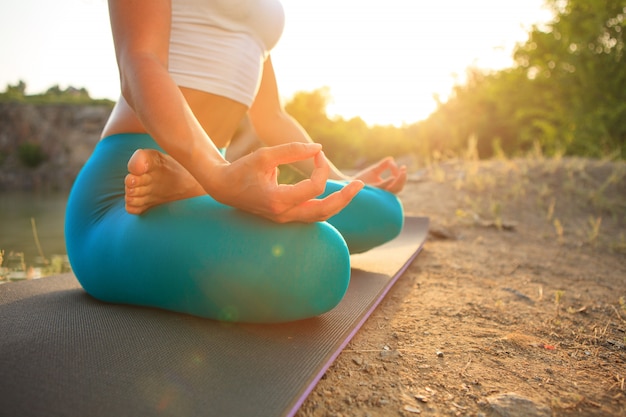
Yoga isn’t just about becoming flexible; it can boost your memory, heart, and bone health. These days, yoga is incredibly popular in the UK, with people spending £790 million annually on classes and mats.
While some yoga trends get bizarre (think rage yoga, paddle-board yoga, or even dog yoga), science increasingly backs its health benefits. Researchers at UCLA found that three months of yoga and meditation were more effective than memory exercises in reducing age-related brain changes. Another study noted improved sleep in breast cancer survivors.
Lucy Edge, a former advertising executive, turned to yoga after battling depression. Instead of taking prescribed antidepressants, she took a six-month break, traveled to India, and learned yoga. Although she didn’t achieve a “yoga body,” she returned feeling happier and content. She authored three books about yoga and started Yoga Meds, a website listing over 300 clinical trials demonstrating yoga’s benefits for various health issues.
If crossword puzzles and Sudoku have been your go-to for memory training, yoga could be a game-changer. UCLA researchers had participants over 55 do either memory exercises or yoga and meditation for 12 weeks. Those who practiced yoga showed better improvements in memory, and reduced depression and anxiety.
To try it, start with one hour of Kundalini yoga per week. It involves gentle movements, breathing techniques, and chanting, which might feel odd initially but is easier than other meditation forms. Complement this with 20 minutes of Kirtan Kriya daily, a type of meditation involving chanting, hand movements, and light visualization.
For heart health, yoga can be just as effective as traditional exercises like brisk walking. A review in the European Journal of Preventive Cardiology found that yoga can lower heart disease risk similarly. Stress, a major contributor to heart disease, can be reduced through yoga by lowering blood pressure, heart rate, and the chances of blood clots.
For stress relief, consider Restorative yoga, which involves holding supported poses for up to 12 minutes. This approach is especially beneficial for the nervous system.
Yoga also aids musculoskeletal health. A physiotherapist named Sarah Shone integrated yoga into a back pain rehab program, and 87% of participants reported pain reduction. NICE guidelines recommend yoga and stretching for lower back pain. Yoga can also strengthen pelvic floor muscles and help with incontinence while boosting bone density.
Begin with more gentle styles like Hatha or Iyengar yoga, and inform your instructor about any health issues. If you have a specific condition like back pain, consult your doctor about subsidized yoga classes through exercise referral schemes.
Investing in good yoga gear, like mats, can enhance your practice. Consider where you’ll use the mat, its thickness, and portability. A quality mat, like the Elephant Cork Yoga Mat from Valka Yoga, is durable, eco-friendly, and cushioned for joint support. Cork mats are great for those who sweat, as they get grippier when wet. Plus, cork is antimicrobial and odor-resistant.
Pair your mat with a cork yoga block to help with reaching poses and maintaining stability. This can be especially useful for beginners.
No matter your flexibility level, there’s a yoga style for everyone. Try Yin or Restorative yoga for a gentle introduction, Vinyasa Flow for a more dynamic practice, or Iyengar for precise alignment. Anusara yoga combines alignment with flowing movements, while Yoga Therapy tailors yoga to heal specific injuries or illnesses.
If you’re interested in diving deeper, Lucy Edge’s book “Down Dog Billionaire” is available on Amazon.